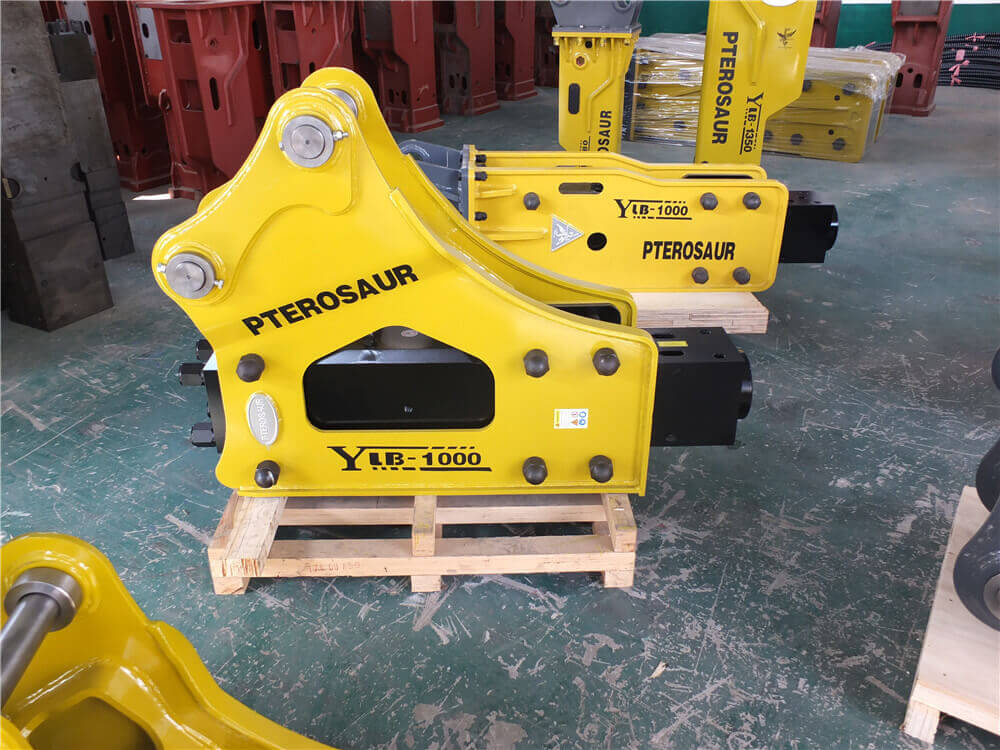Understanding Hydraulic Breaker Hammers: Essential Tools for Demolition and Construction
Hydraulic breaker hammers are indispensable tools in the construction and demolition industry, designed to efficiently break concrete, rock, and other hard materials. This article delves into various aspects of hydraulic breakers, including their functionality, selection criteria, and the benefits they offer in heavy-duty operations.
What is a Hydraulic Breaker Hammer?
Hydraulic breaker hammers, often referred to as hydraulic hammers, are percussion tools powered by hydraulic systems. They operate by using hydraulic pressure to generate a high-impact force, enabling them to break apart tough materials with ease. These attachments are commonly mounted on carriers such as excavators, skid steers, and backhoes, making them versatile tools suitable for various tasks, from demolition to construction.
Key Features and Models
Various models of hydraulic hammers are available to cater to different needs and machine sizes. For instance, models like the ShearForce SM25 provide exceptional impact energy for breaking concrete slabs, while Montana Breaker combines high operational efficiency with nitrogen gas energy for powerful breaking force.
Specifications to Consider:
- Working Weight: The weight of the hammer significantly impacts its performance. For example, the PH062 model weighs around 220 lbs and is suitable for smaller carriers.
- Recommended Carrier Weight: Hammers must be matched with the appropriate carrier for optimal performance. Understanding the weight class of both the hammer and the carrier is critical to ensure safety and efficiency.
Choosing the Right Hydraulic Hammer
When selecting a hydraulic breaker hammer, several factors must be considered:
1. Size and Compatibility: Ensure the hammer is compatible with the carrier machine. A proper fit is crucial for effective operation.
2. Impact Energy: The hammer’s impact energy rating should align with the task at hand. Higher impact energy is required for breaking harder materials like reinforced concrete.
3. Application Requirements: Different jobs may require different types of hammers. For instance, a lighter hammer might be needed for demolition in tight spaces, while a heavier one is more suited for large-scale operations.
Benefits of Using Hydraulic Breaker Hammers
Hydraulic hammers offer numerous advantages in construction and demolition:
– Efficiency: They can break concrete and rock much faster than traditional methods, significantly reducing project timelines.
– Versatility: These tools can be used for various applications, from breaking up concrete slabs to demolishing entire structures.
– Durability: High-quality hydraulic hammers are designed to withstand rigorous use, ensuring longevity and reliability on the job site.
Popular Brands and Products
Several reputable manufacturers produce hydraulic breaker hammers. Some notable names include:
– Epiroc: Known for a wide range of hydraulic hammers tailored for excavators and other machinery.
– Gorilla Hammers: Offers powerful and durable hydraulic breakers designed for heavy-duty demolition.
– RJB Hydraulic Hammers: Provides a variety of hydraulic hammers suitable for different applications, ensuring durability and ease of maintenance.
Conclusion
Hydraulic breaker hammers are crucial tools for anyone involved in demolition and construction. By understanding their functionality, selecting the appropriate model, and recognizing their benefits, operators can maximize productivity and efficiency on their job sites. Whether you’re breaking concrete, demolishing structures, or performing repairs, investing in the right hydraulic hammer can make all the difference in achieving successful project outcomes.



































